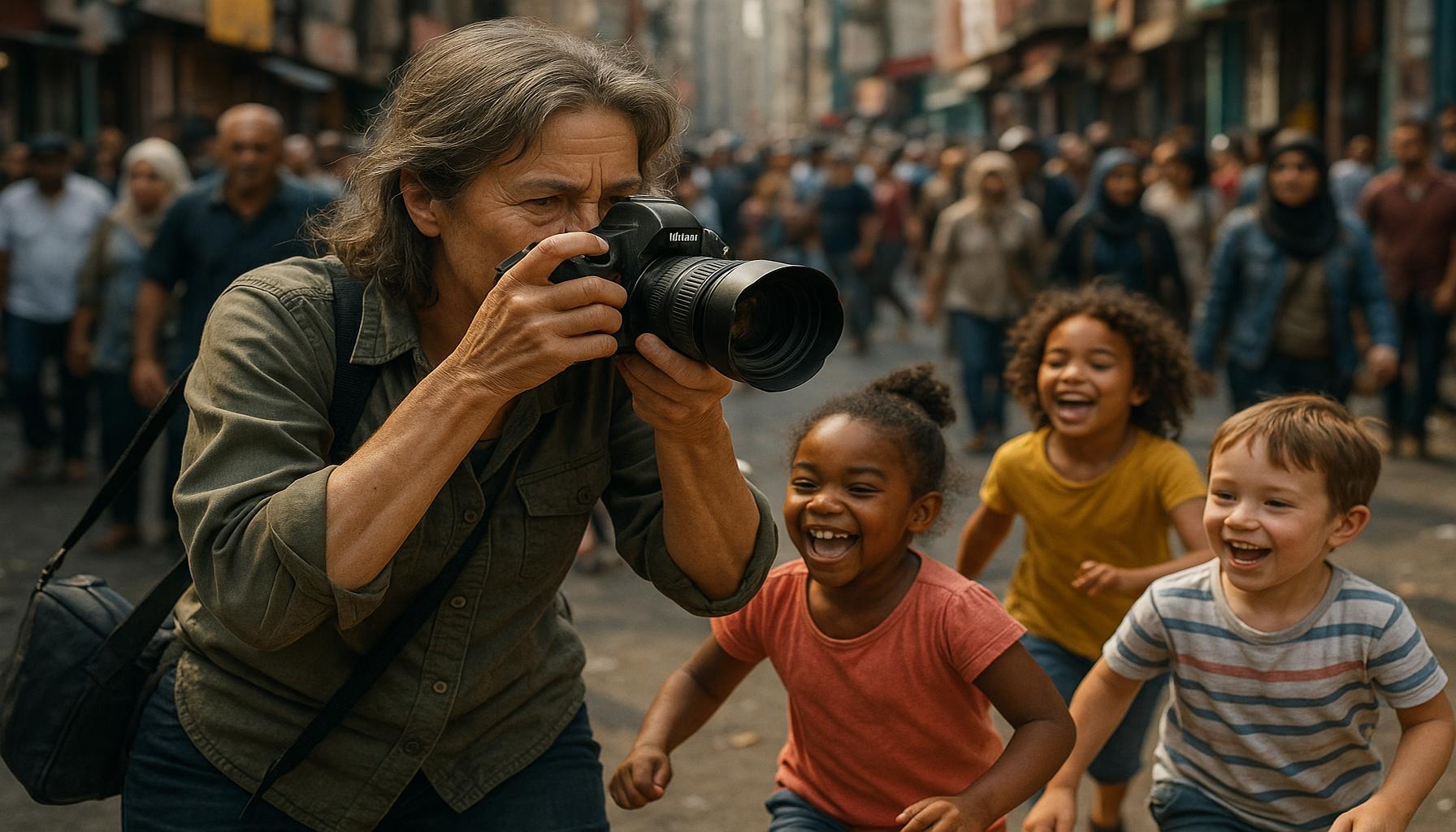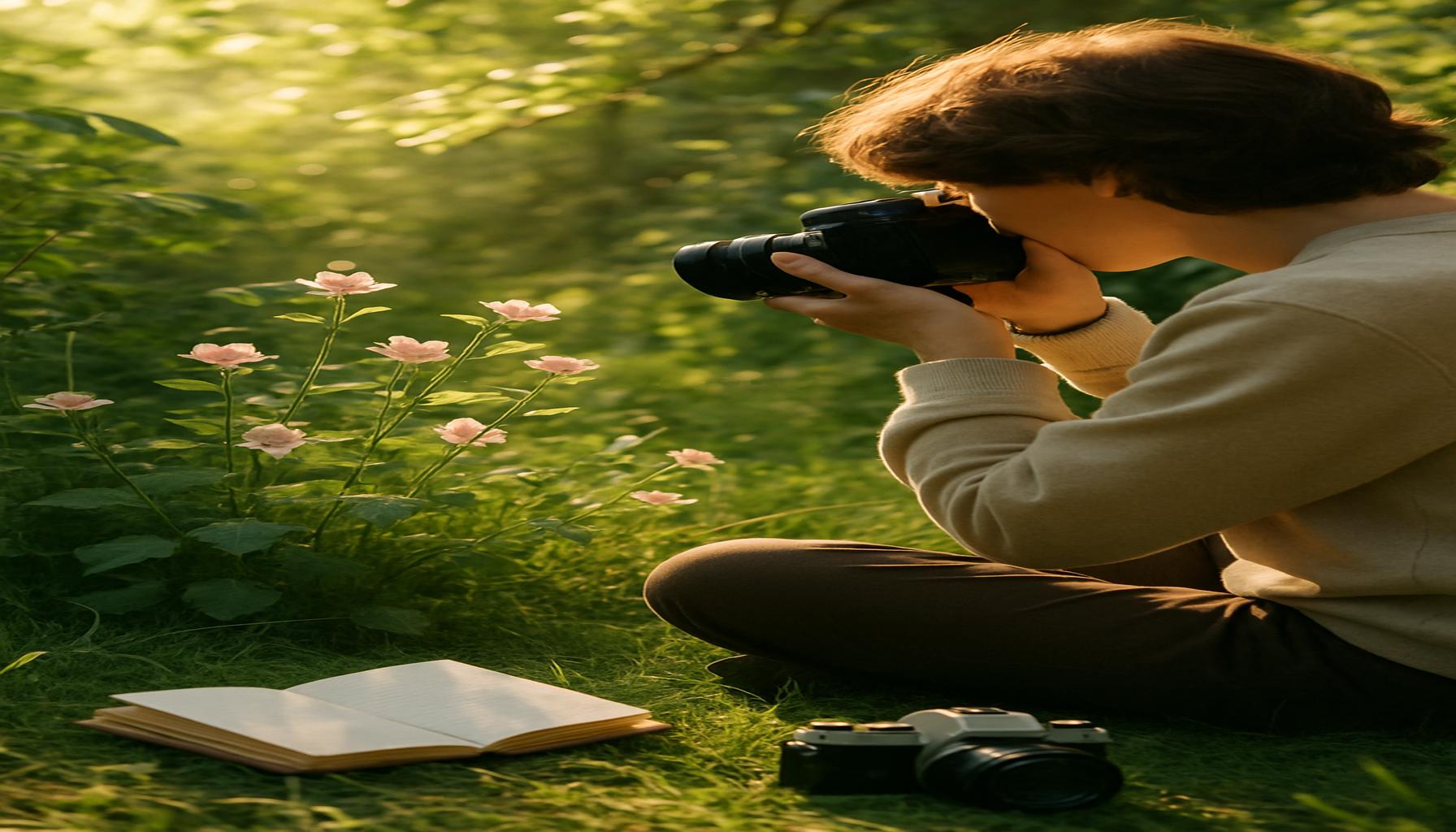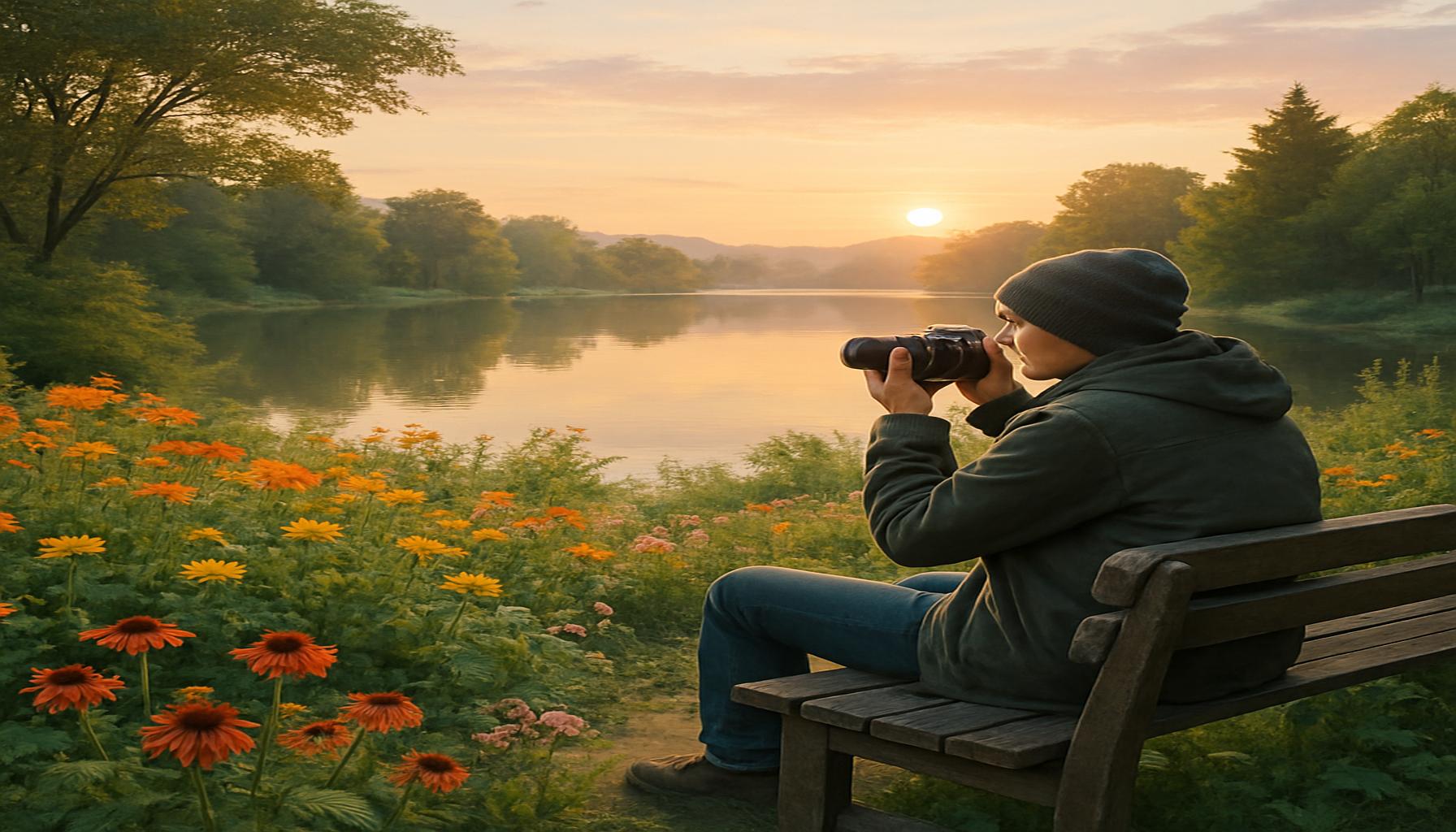The Importance of Composition in Photography: How Visual Elements Tell Stories

The Artistry Behind Pictures
Photography transcends the mere act of pressing a button to capture a fleeting moment; it’s an intricate artistic practice that intricately mingles technique with vision. The importance of composition cannot be understated, as it serves as the backbone of any captivating image, transforming ordinary snapshots into remarkable visual stories that resonate with viewers on a profound level.
At the heart of effective photography lies the concept of composition, a term that refers to how elements within a frame are organized. This arrangement is vital to the emotional and narrative quality of the photograph, allowing it to convey layers of meaning. Key components that photographers often focus on include:
- Rule of Thirds: This foundational principle involves dividing the frame into a grid of nine equal sections, creating reference points that help position your subjects. Placing important elements along these grid lines or their intersections can significantly enhance the visual interest of the photograph. For example, when photographing a sunset, positioning the horizon along the top third of the frame emphasizes the vibrant sky.
- Leading Lines: Utilizing natural lines within a scene directs the viewer’s attention toward the focal point of the composition. Roads, rivers, and pathways can guide the eye into the depth of the image, creating a sense of movement and drawing viewers into the narrative. When you shoot a long road winding through a forest, you invite the viewer to imagine the journey ahead.
- Framing: This technique involves using elements in the scene—such as trees, windows, or archways—to create a “frame” within your photograph. This approach not only adds depth but also concentrates the viewer’s focus on the subject. For example, capturing a child playing inside a colorful playhouse framed by the entrance can make the scene feel more intimate and personal.
- Balance: Both symmetrical and asymmetrical balances play a crucial role. Symmetry creates harmony and stability, while asymmetry can introduce dynamism and tension. Consider a photograph of a quiet lake with mountains reflecting perfectly in the water; this symmetry evokes a sense of tranquility. In contrast, an asymmetrical balance using a single tree on one side and a wide expanse of sky on the other can evoke a feeling of vastness and freedom.
These compositional elements interplay to establish a visual hierarchy, guiding the audience through the story you wish to share. For instance, a photograph capturing urban life—such as a crowded farmer’s market or a bustling New York City street—can convey excitement and energy. Conversely, a wide shot of a tranquil national park, like the stunning vistas found in Yosemite, can evoke peace and reflection.
In today’s fast-paced digital era, mastering composition is essential for photographers of all skill levels. Whether you are a hobbyist venturing into the world of photography or a seasoned professional refining your craft, understanding these techniques can unlock a myriad of creative opportunities. It empowers your images to communicate messages clearly and effectively, inviting viewers to engage with the world through your lens.
DISCOVER MORE: Click here to dive deeper

Understanding Composition: The Foundation of Storytelling
A photograph is often described as a moment frozen in time, but what truly gives it life is its composition. The careful arrangement and selection of visual elements within a frame can turn a simple image into a gripping narrative. For photographers, understanding how these elements interact is critical for crafting images that leave an impression and evoke emotions. Composition serves as the guiding principle that helps photographers tap into the storytelling potential of their photos.
At its core, effective composition involves recognizing how light, color, and space can be manipulated to create visual stories. Here are several key elements that every photographer should consider:
- Color Theory: The colors in a photograph can convey emotions and set the tone of the imagery. Warm colors like reds and oranges can evoke feelings of warmth and passion, while cooler tones like blue and green can inspire tranquility and calm. For instance, a sunset captured in vibrant hues can instill nostalgia, while a blue-toned image of a quiet shoreline may evoke a sense of peace.
- Negative Space: This concept refers to the areas surrounding the main subject in a photograph. By intentionally leaving out details in a composition, photographers can emphasize their subject. A single tree standing alone in a vast open field can convey themes of solitude and resilience, encouraging viewers to think deeply about the story behind the image.
- Depth and Perspective: Incorporating various perspectives adds dimensionality to a photograph. Techniques such as using a low angle to shoot upwards or a high angle looking down can dramatically change the viewer’s perception of the subject. This can be particularly effective in landscape photography, where capturing the vastness of a scene can provoke awe and admiration.
- Texture and Pattern: The inclusion of textures or patterns can add interest and richness to a photograph. Whether it’s the intricate detail of a weathered barn, the smooth surface of a tranquil lake, or the geometric patterns of city buildings, these elements can provide depth and context, further enhancing the narrative quality of the image.
These compositional choices allow photographers to create a dynamic interplay between the elements within the frame, effectively guiding the viewer’s gaze and interpreting the intended message. For example, consider a photograph of a busy street market in San Francisco; the vibrant colors and bustling activity can evoke sensory overload, mirroring the energy of urban life. Conversely, an image capturing the serene beauty of a national park might communicate a moment of reflection and tranquility, inviting viewers to escape into nature’s embrace.
As photographers refine their understanding of composition, they gain the tools to convey compelling stories through their lenses. Each choice not only adds a layer of meaning to their images but also invites viewers to discover new narratives and sensations. In a world flooded with visuals, mastering the art of composition distinguishes one’s work and draws audiences deeper into the heart of the photographic story being told.
The Role of Visual Elements in Composition
The composition of a photograph sets the stage for storytelling. Each visual element—whether it’s the arrangement of subjects, the play of light and shadow, or the chosen angle—contributes to the overall narrative. Understanding the rule of thirds, for example, allows photographers to create a more engaging image by placing the main subject off-center. This not only draws the viewer’s eye but also encourages exploration of the surrounding elements.Another critical component is the use of leading lines. These are natural lines within a scene that guide the viewer’s gaze towards the focal point. Whether it’s a winding path, a river, or architectural features, leading lines create depth and perspective, making the photograph more dynamic and inviting. When effectively employed, these elements can evoke emotion, provoke thought, and convey a message that resonates with the audience.Additionally, framing is a powerful technique that utilizes elements within the scene to create a “frame” around the subject. This artistic choice not only emphasizes the focal point but also adds context and layers to the story being told. Whether it’s foliage surrounding a portrait or architectural elements forming a border, framing can heighten the viewer’s connection to the image.In essence, mastery in composition is not merely about aesthetic appeal; it’s about harnessing these visual elements to narrate compelling stories. Photographers who consciously manipulate these components elevate their work, resulting in images that speak volumes without uttering a word. These narratives can influence perceptions, challenge beliefs, and inspire action, leading viewers to engage with art on a deeper level. As such, understanding the nuances of composition is paramount for any photographer aspiring to tell compelling stories through their work.
| Visual Element | Impact on Storytelling |
|---|---|
| Rule of Thirds | Creates dynamic images by off-centering subjects, encouraging exploration. |
| Leading Lines | Guides the viewer’s eye to the focal point, adding depth and perspective. |
| Framing | Enhances emphasis on the subject and adds context, enriching the narrative. |
Understanding how these components work in tandem allows photographers to create more impactful images that resonate with their audience, pushing them toward greater appreciation of the art form.
DISCOVER MORE: Click here to dive into the art of storytelling
Enhancing Narrative Through Composition Techniques
The ability to effectively engage viewers rests heavily on the photographer’s mastery of various composition techniques. These techniques can either reinforce the story being told or create new interpretations that may not have been initially apparent. Understanding and implementing these principles can distinguish a photograph that merely documents an event from one that resonates on a deeper emotional level.
One of the most crucial techniques is the Rule of Thirds. This principle involves dividing the frame into a 3×3 grid, where the key elements of the photo are positioned along these lines or at their intersections. Doing this not only fosters balance but also creates a sense of movement within the frame. For example, positioning a subject slightly off-center while leaving space in the direction they are looking can create tension and guide the viewer’s gaze. This technique is widely used in portraits, landscapes, and street photography alike, enhancing the overall storytelling aspect of the image.
The leading lines technique is another powerful tool. Photographers can use natural lines—such as roads, rivers, or even shadows—to draw the viewer’s eye through the image and towards the main subject. This approach can create a sense of journey or exploration within the photograph, prompting viewers to envision the world beyond the frame. For instance, an image of a winding path leading up a mountain can evoke a sense of adventure, inspiring viewers to imagine the trek and the experiences that lie ahead.
Moreover, the use of framing can significantly enhance the narrative context of a photograph. By using natural elements—like overhanging branches or doorways—a photographer can frame their subject and create a visual vignette that draws attention. This not only emphasizes the subject but also provides context, creating a story within a story. Imagine capturing a child playing happily at a park, framed by the arch of a vibrant flower bed; this not only highlights the subject but immerses the viewer in a setting that suggests innocence and joy.
In addition to these techniques, the integration of contrast in composition can add weight to a narrative. By juxtaposing light against dark or vibrant colors against muted tones, the photographer can evoke different emotions and reactions. For example, a photograph of an abandoned house bathed in golden twilight can juxtapose nostalgia against decay, prompting viewers to reflect on themes of time and memory. This play of contrast effectively communicates deeper narratives that resonate with the audience.
Finally, emotion expressed through composition plays a significant role in photostorytelling. A photograph capturing a joyous celebration or a tender moment between loved ones can encapsulate feelings that words may fail to convey. The intentional choice of angles, the inclusion of expressive body language, and the attention to detail can all enhance the emotional depth of a photograph. Consider the impact of a well-timed shot during a wedding ceremony, where the raw emotions of joy and love are palpable, creating a lasting narrative that will be cherished for years.
Thus, the mastery of composition techniques not only enriches a photographer’s skillset but also opens up a world of storytelling potential. By skillfully utilizing these elements, photographers can transcend mere documentation and transport their audience into captivating narratives framed within each shot.
DISCOVER MORE: Click here to learn about the power of musical collaboration
Conclusion
In the realm of photography, the importance of composition cannot be overstated, as it serves as the backbone of visual storytelling. By implementing various techniques like the Rule of Thirds, leading lines, and framing, photographers are empowered to create images that resonate deeply with viewers. These elements not only showcase technical skill but also trigger emotional responses, encourage inquiry, and provoke thought.
Moreover, juxtaposing light and color through contrast enhances narrative depth, inviting observers into a world teeming with emotion and meaning. Each photograph can evoke a myriad of feelings—from nostalgia to joy—simply through the strategic arrangement of elements within the frame. This capability transforms ordinary snapshots into extraordinary stories that linger in the minds of the audience long after they are viewed.
As photographers refine their craft, they unlock new dimensions of creative expression and reinforce their narratives through composition. The stories captured within every frame not only document life as it unfolds but also spark curiosity and connection among diverse audiences. In a world where visual content continuously shapes perception, understanding the profound impact of composition is essential for anyone looking to communicate effectively through the art of photography.
Ultimately, the mastery of composition techniques is a journey worth embarking on—one that enriches the storyteller while leaving a lasting imprint on those who engage with their work. Inviting others to explore the narratives encoded in visual elements opens the door to endless discovery, making the study of photography an ever-evolving and significant endeavor.



